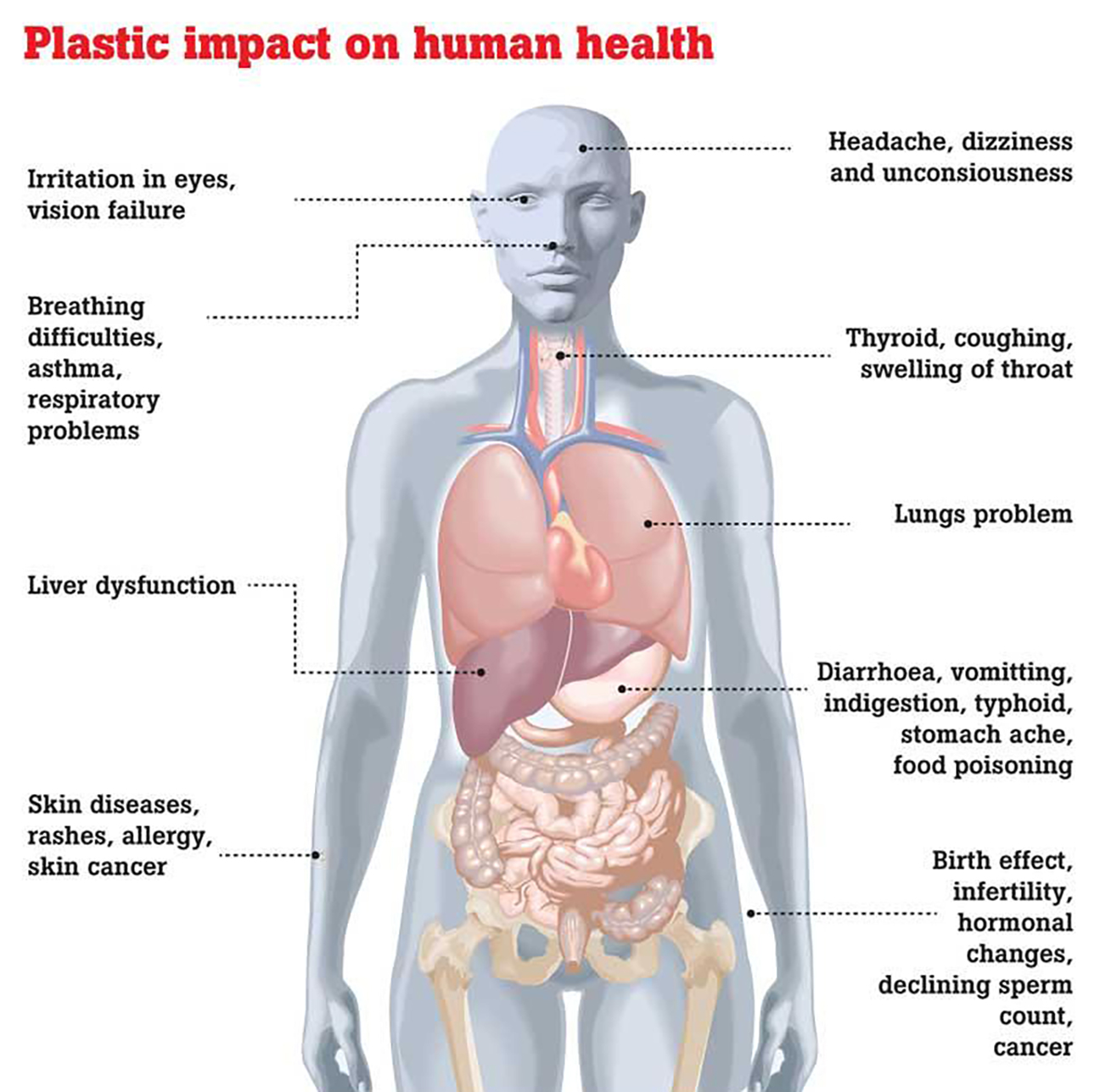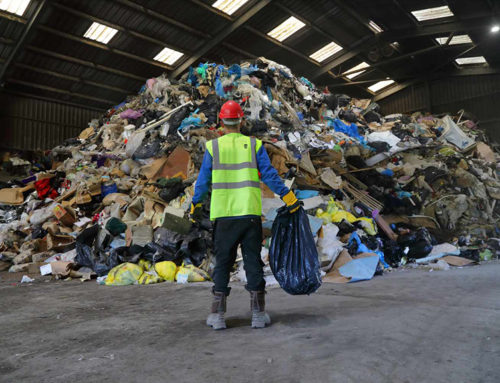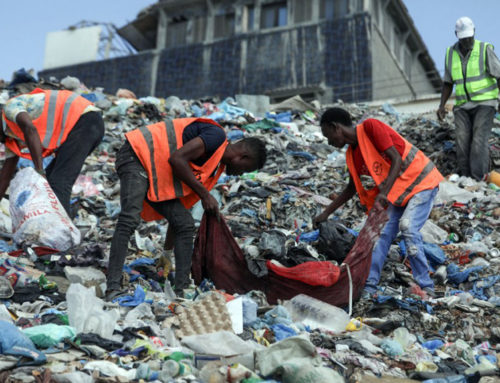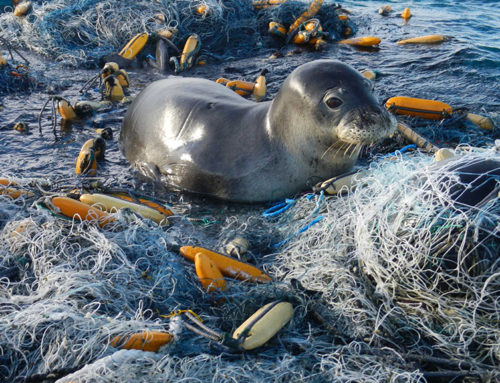Plastic, once hailed as a revolutionary material for its convenience and versatility, has become an omnipresent force in our daily lives. From packaging to household items, it seems impossible to escape the clutches of this synthetic wonder and the threat of plastic on human health. A closer look reveals a darker side to our plastic dependence—one that poses significant risks to both wildlife and human health.
Plastic’s proliferation began in the early 20th century, quickly replacing traditional materials like glass, clay, wood, metal, and paper. The boom in plastic production during the 1950s promised a more convenient and cost-effective way of life, but its consequences are proving to be dire.
The environmental impact of plastic waste is well-documented, with its persistence in the ecosystem lasting for hundreds of years. Beyond its ecological toll, plastics present a unique threat to human health, and the evidence is mounting.
Early on, little attention was given to the potential health effects and the threat of plastic. From 1961 to 1980, a mere 47 studies examined the human health impacts of plastics, focusing primarily on synthetic polymers like Nylon, Teflon, and Mylar. Limited research during this period explored the effects of these polymers on the skin, digestive system, and immune system.
The 1980s marked a shift as scientists delved into the impacts of plastics on the endocrine, metabolic, and nutritional systems. Notably, studies on Polychlorinated Biphenyls (PCBs), present in plastics, revealed their carcinogenic nature and their detrimental effects on the immune, reproductive, nervous, and endocrine systems. Despite their dangers, PCBs persisted in the environment and in our bodies long after their production was banned.
As research expanded into the 1990s, the focus turned to phthalates, additive chemicals used to enhance plastic durability. High levels of phthalates, found in everyday items like cosmetics, toys, and vinyl flooring, pose a particular threat to infants who unknowingly ingest microplastics and the leached phthalates. Phthalate exposure has been linked to adverse effects on the reproductive and endocrine systems, with potential consequences for blood pressure, menopause, birth weight, pregnancy, and preterm birth.
The 21st century introduced a new wave of chemical additives, including bisphenols, PFAS, and PBDEs, each bringing its own set of health risks. Bisphenols interfere with cell functions, contributing to cardiovascular diseases, neurological disorders, reproductive abnormalities, and diabetes. PFAS, known as “forever chemicals,” are associated with increased cancer risk, reproductive and developmental effects, and interference with hormones and the immune system.

Despite the growing body of research on the threat of plastic, the true extent of the health impacts remains largely unknown. Out of over 10,500 chemicals used in plastic production, only 1,557 have been studied. Moreover, from 1961 to 2022, no human exposure studies examined the effects of microplastics or nanoplastics, leaving a critical gap in our understanding of their implications.
To address the plastic crisis, a concerted effort is needed to expand research, especially in industrializing nations disproportionately affected by plastic pollution. Additionally, reducing plastic production by 60% by 2040 is crucial to minimizing exposure and safeguarding human health. Only through a multifaceted approach can we hope to unravel the hidden dangers of plastic and pave the way towards a healthier, sustainable future.
Further addressing the situation, by investing in reusable products, we can not only diminish the demand for new plastic but also mitigate the environmental impact of discarded items. Reusable alternatives, such as containers, bags, and water bottles, have the potential to reset the clock on the environmental damage caused by single-use plastics. These products, when properly cared for, can be a sustainable and long-lasting solution to our consumption habits.
Recycling and remanufacturing play pivotal roles in this transformation. Instead of perpetuating the cycle of plastic production, we must prioritize the repurposing of existing materials. Recycling allows us to reclaim valuable resources, reducing the need for virgin plastic and curbing the environmental toll of extraction and production. Remanufacturing extends the life of products, ensuring that they continue to serve their purpose without contributing to the disposable culture.
The concept of resetting the clock to zero involves a collective commitment to sustainable practices and a reevaluation of our relationship with plastic. Governments, industries, and individuals all play crucial roles in this endeavor. Policies that restrict single-use plastics, incentivize recycling, and promote the use of reusable products are essential components of a comprehensive strategy.
Educating the public about the environmental consequences of plastic consumption is equally important. By fostering awareness and encouraging responsible consumer choices, we can create a groundswell of support for a plastic-free future. Initiatives that promote the adoption of reusable products and highlight the benefits of recycling and remanufacturing are vital in reshaping societal norms.
Resetting the clock on the threat of plastic pollution requires a multifaceted approach that encompasses reduction, reuse, recycling, and remanufacturing. By collectively steering away from single-use plastics, embracing reusable alternatives, and leveraging existing resources through recycling and remanufacturing, we can chart a new course towards a sustainable and environmentally conscious future. The time to act is now, and the power to reset the clock is in our hands.






